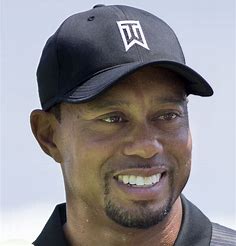Is Tiger Woods the Greatest Golfer of all Time? That’s the question as Tiger Woods returns center stage to the PGA Tour after a two-year absence from full-time competition.
It matters not a whit if you follow golf or could care less about chasing a little white ball around an oversized park. Whether you’re a Tiger fan or not, the excitement and worldwide media attention generated by Wood’s return to the professional game has dominated the sports headlines of newspapers, television, magazines and chat boards around the world.
Playing his first tournament in ten months, resulting in a tie for ninth at the Hero World Challenge last December when he finished ten shots behind the winner, Ricky Fowler, comes after a series of miscues while trying to return to the form that made him the undisputed number one ranked player in the world.
Injuries, personal problems, and other issues had dropped Tiger to 550th in the Official World Golf rankings, knocking him out of the top 100 for the first time since 1997 when he won the Masters by a record score of eighteen under par beating Tom Kite by twelve shots.
Once a weekend machine, he holds the record for consecutive cuts made at 142, Tiger has struggled with consistency in all facets of his game, having played the weekend just once in a regular PGA Tour event since 2015. A tie for 23rd, at the recent Farmers Insurance Open in January, on the Torrey Pines layout he has played since his junior golf days, is his best finish in a full field tour event since the 2015 Masters, when he finished 17th, 13 strokes behind Jordan Spieth.
Having undergone four back surgeries during his time off from competition, including having his back fused in April of 2017, Tiger is looking to regain the magic that produced a record unmatched in modern golf history: 79 PGA Tour wins, 18 World Golf Champi onships, 14 Major Championships, 2 FedEx Trophies, 11 PGA Player of the Year awards, 142 consecutive cuts made and 683 weeks as the World number one player.
onships, 14 Major Championships, 2 FedEx Trophies, 11 PGA Player of the Year awards, 142 consecutive cuts made and 683 weeks as the World number one player.
Tiger’s return to competitive golf, having missed the last eight major professional championships with health issues, will include playing all the major’s this year starting with the Masters in April.
How his 42-year-old body withstands the rigors of a full PGA Tour schedule will predicate Tiger’s decision to play multiple tournaments in 2018. A series of false starts the last two years have left golf fans around the world holding their collective breath each time he swings a golf club. And with good reason. Watching Tiger recent play in competition is now akin to watching NASCAR, a hockey match or the running of the bulls at Pamplona. Suspense, anticipation and the abject horror when the anticipated disaster occurs is what drives the ratings in those events. Tiger’s last couple of years, with the hits and misses, the WD’s, repeated surgeries and rehabs have only ratcheted up the anticipation of when his achy back will fail, and the promise of his immense talent is sidelined yet again along with the hopes and prayers of golf fans around the world.
Albeit, not everyone is a Tiger Fan. Fame is a harsh spotlight that magnifies even the smallest of imperfections. When foisted against towering achievement, the public is very seldom ambivalent in its praise or condemnation of personal failures and transgressions. I’ve heard more than one comment about the over-the-top media coverage of Tigers recent play at Torrey Pines while neglecting the other players at, or near, the top of the leaderboard. It is a common complaint often heard when Tiger competes and cameras follow his every move.
The fact of the matter is this. Regardless of how many tournaments Jordan Spieth, Dustin Johnson, Ricky Fowler, Justin Thomas or any of the other faceless, nameless, young phenoms on the PGA Tour win, the world of golf needs Tiger Woods anywhere near the leaderboard or in contention on Sunday afternoon.
Sportswriters, media pundits, and talking heads have all voiced their opinions that Tiger moves the needle on golf telecasts. The fact is, he alone, of all the players in the game today, is the catalyst that draws spectators to the venues and broadcasts. He sells the tickets, shirts, hats, and concessions. Golf, and indeed sports in general, need him in the hunt as he makes his last run at golf history.
The anticipation of how Tiger will fair at this year’s Masters after such a long layoff from competitive golf is a question everyone connected to the game of golf has been asking as he mounts one last charge at surpassing Jack Nicklaus’s record in professional golf.
How that drama plays out remains to be seen. And the world will surely be watching every step of the way. But the question that resonates throughout golf and the one I’m asking you today is this: Has Tiger Woods done enough, in his illustrious career, to be called the best player who ever played?
Here is my take on that question.
Any investigation into the greatest player in the business of golf must start with major championships. You can blame Bobby Jones for that. In Golf’s infancy, which was the early part of the twentieth century, it was no contest. Bobby Jones was the greatest who ever lived. 4 US Opens, 3 British Open Championships, 5 US Amateurs, and 1 British Amateur. Bobby Jones won thirteen major tournaments during his career including all four of the “major championships” in 1930. The “Grand Slam” it was called, setting a standard for golf posterity, earning him a ticker tape parade down Wall Street in New York City and golf immortality.
Mr. Jones promptly retired from competitive golf, retired to his law profession and set about building a country club that would become Augusta National, home to the Masters. In time, the Masters and the PGA Championship would replace the United States and British Amateurs as, “so-called” majors in golf jargon when professional golf supplemented amateur golf as the dominion of the best players in the world.
 If based on golf history, major championships are the gold standard for rating players, and I think they are, then Jack Nicklaus with 18 majors is the clear winner. Tiger Woods is second with fourteen. Bobby Jones next with thirteen. Walter Hagen is fourth with eleven. Ben Hogan and Gary Player have nine each. Tom Watson is seventh with eight majors, and four players round out the top ten with seven: Arnold Palmer, Gene Sarazen, Sam Snead and Harry Vardon; all are legends in the game of golf.
If based on golf history, major championships are the gold standard for rating players, and I think they are, then Jack Nicklaus with 18 majors is the clear winner. Tiger Woods is second with fourteen. Bobby Jones next with thirteen. Walter Hagen is fourth with eleven. Ben Hogan and Gary Player have nine each. Tom Watson is seventh with eight majors, and four players round out the top ten with seven: Arnold Palmer, Gene Sarazen, Sam Snead and Harry Vardon; all are legends in the game of golf.
But here is my opinion: When measuring records and where players stand in the pantheon of greatness and you use just the professional championships, (i.e., The US Open, British Open Championship, PGA Championship and the Masters), then Bobby Jones won only seven. You would have to discount the United States and British Amateurs, which, in my mind, is blatantly unfair seeing as he was the one who set the original standard in 1930 by counting, among his totals, those two championships and winning the original “Grand Slam.”
So here’s the deal, if you use just the professional majors as the standard of greatness, then Jack is the best to have ever played with Tiger second. And until Tiger beats Jack’s record of eighteen professional majors, then Jack’s the best. No question about it. But, and here’s the rub, if we weigh Bobby Jones’s six amateur championships towards his total as history does, then you have to count Jack’s 2 US Amateurs as well. That gives Bobby Jones his thirteen championships, and Jack still holding the lead with twenty.
But if you count Jack’s 2 US Amateurs then you also must count Tiger’s 6 Amateurs. People forget Tiger won 3 US Junior Amateurs and 3 US Amateurs consecutively. Something only Tiger has done and, given the quick turn-around from amateur to professional in today’s golf climate, likely will not happen again. There is just too much money to be made in playing golf for a living.
But, before you start belittling the Junior Amateurs, remember this, they are United States Golf Association National Championships, against the best junior players in the world. Counting these championships give Tiger a total of twenty golfing majors, presenting a statistical tie with Jack Nicklaus as players with the most championships overall and don’t think for a moment that Tiger doesn’t know this.
But let’s dispense with semantics. Casting those Junior Championships aside, you should know this. Tiger Woods is a proud and fiercely competitive  athlete. He plays the game to win and has been chasing records his entire golfing career. Tiger also knows, regardless of all he has done, all the records he holds, the honors achieved and the greatness of his overall legacy, there are still two asterisks against his record, and they will always be there unless his comeback is complete. Doubt as to his stature as the best player ever is always present until he breaks the two records he still chases. Most Professional wins on the PGA Tour and Professional Majors, (i.e., Masters, US Open, British Open and PGA Championships).
athlete. He plays the game to win and has been chasing records his entire golfing career. Tiger also knows, regardless of all he has done, all the records he holds, the honors achieved and the greatness of his overall legacy, there are still two asterisks against his record, and they will always be there unless his comeback is complete. Doubt as to his stature as the best player ever is always present until he breaks the two records he still chases. Most Professional wins on the PGA Tour and Professional Majors, (i.e., Masters, US Open, British Open and PGA Championships).
Sam Snead holds the first record with 82 professional wins and Jack holds the latter with 18 major professional championships. Tiger is second to both with 79 professional wins and 14 majors respectively. It stands to reason if Tiger breaks Jack’s major’s record he will also beat Sam’s record of wins on the PGA Tour. Keep in mind Sam was 52 years old, almost 53, when he won the Greater Greensboro Open for his last professional victory and Jack was 46 when he won the 1986 Masters. Tiger, who just turned 42 in December, still has time but he probably knows this is his last best shot at breaking both records if he is to fulfill his chosen destiny of being the greatest ever to play the game. His time is running out.
Tiger’s quest will be a challenging feat to accomplish. Only fourteen players in the history of professional golf have won five or more majors in their career. Tiger, if he is to achieve his goals, must win those five majors soon and with a badly broken and oft-repaired body, starting this year.
There should be no doubt that Tiger must quickly regain the brilliance that once made him the number one player in the world if golf fans, media, and historians are to renew the conversation about who is the best player in history. There is also no doubt that, for the present moment, it’s between him and Jack Nicklaus. They are head and shoulders above everyone else. What’s exciting to all who follow sports and golf in particular, is the conversation of who is the best player has started once again and will continue for as long as Tiger Woods plays competitive golf.
 As the 2018 golf season plays out, as Tiger continues his quest, if his re-constructed body holds up under the rigors and pressure of regular competition, if the golf gods are willing, we should keep this one simple fact in mind.
As the 2018 golf season plays out, as Tiger continues his quest, if his re-constructed body holds up under the rigors and pressure of regular competition, if the golf gods are willing, we should keep this one simple fact in mind.
In Tiger’s world, there are only four tournaments worth winning. The first one on the schedule, amidst the rolling hills and undulating greens of the Augusta National, begins the first week in April at the Masters and this tournament will be the first definitive test of Tiger’s resolve, endurance, and courage.
Make no mistake, whatever success Tiger has in this tournament and how he competes against all the contenders that have gotten rich in his absence, will go a long way to answering the question I asked at the beginning of this article: Is Tiger the greatest player in the history of golf?
My answer: Not yet, but he still has a chance. And, as of now, he’s the only player in the world in that conversation.
Jeff Waters is a PGA Master Professional and a member of the Golf Writers of America



